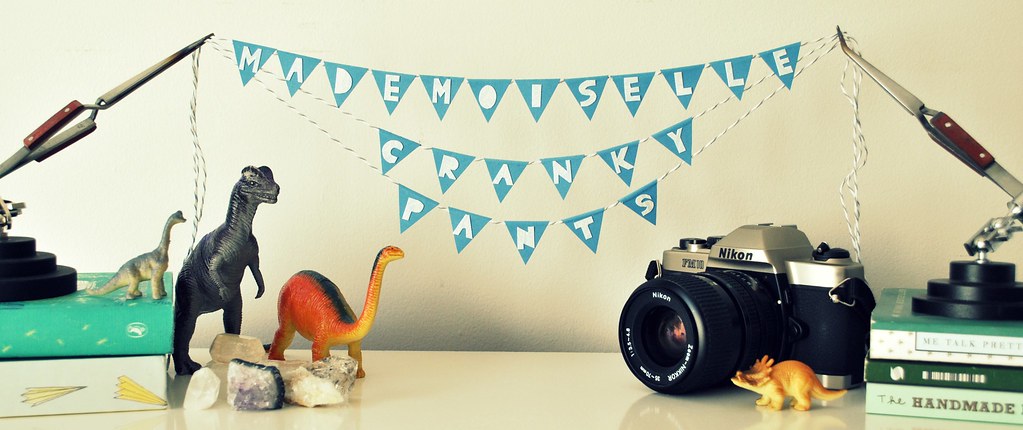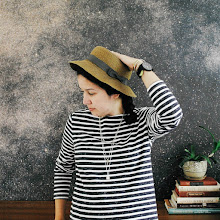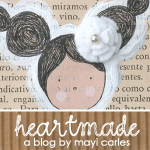Welcome to the second part of my Instagram for creatives series! Last time, I took you on a little starters trip about Instagram and how to set up your account neat, nice and ready to present yourself to the IG world. This time, I'll let you know about my techniques for great phone photography, which are the very foundation for a great IG feed. Pay attention because this is the stuff that comes before all those fancy editing tools!
Truth is, no fancy filter can transform a bad photo into a nice one. Period. That's why this post is very important, as you'll learn to take a great photo to begin with, a photo that it's worth editing and post it to Instagram. Your smartphone is an amazing, easy to use, and always available tool and regardless what most people might think, you ABSOLUTELY CAN take amazing photographs with it.
People often ask me if the photos on my IG feed are taken with a regular camera, and the answer is that 99% of my photos are taken/edited using only my iphone (the occasional 1% is lookbook shots from my jewellery, taken with a regular camera by professional photographers). How do I do it? I just make sure to always apply these 3 super simple techniques:
People often ask me if the photos on my IG feed are taken with a regular camera, and the answer is that 99% of my photos are taken/edited using only my iphone (the occasional 1% is lookbook shots from my jewellery, taken with a regular camera by professional photographers). How do I do it? I just make sure to always apply these 3 super simple techniques:
1.- A clean lens.
This is such common mistake that I see happening all the time and it's truly a shame because is so easy to avoid! The thing is, you can be showing a gorgeous landscape, a lovely portrait or a beautiful piece of jewellery but if your lens was dirty when you took the photo, it’s going to be difficult to overlook the smudge and truly appreciate the image behind it. So, step number 1: make sure your lens is clean.
This is such common mistake that I see happening all the time and it's truly a shame because is so easy to avoid! The thing is, you can be showing a gorgeous landscape, a lovely portrait or a beautiful piece of jewellery but if your lens was dirty when you took the photo, it’s going to be difficult to overlook the smudge and truly appreciate the image behind it. So, step number 1: make sure your lens is clean.
I use alcohol swabs to clean and tissue paper to dry when my lens is very dirty (having a messy 7 year-old grabbing my phone with food on her hands makes the affair a pretty common one!). For less messy situations I use a micro fabric and gently remove the smudge. Somewhere I read that using any sort of liquid to clean the lens is not the best way as it can damage it but so far, alcohol swabs have always worked fine for me. If you want to stay on the safe side, use only a microfibre tissue and steer off of any liquids near your lens. At the end, no matter how you do it, the important thing is to make sure you keep it clean and ready!
Let me show you a quick example of how things look when your lens is dirty vs what it looks like with a clean lens:
As you can see, the difference a dirty/clean lens make is HUGE. A clean lens will let you capture even the smallest details and create a neat, more interesting image, while the smudgy one, well, is just embarrassing.
2.- Focus.
Unless it's one of those dreamy #BlurryOnPurpose pics (LOL!), you want to steer completely away form posting a blurry image. Blurry photos come up mostly due to movement or lack of use of the focus feature in your camera. Taking a clear, neat shot it's basic for making the image reflect the beauty of the object/moment you are shooting. But don't get me wrong, I do love a bit of movement in my pics, it adds deepness and life to them, but I always make sure I can control that movement by making it happen just in the part of the image I want to, by using my focus target.
Take a second to steady your hand before taking that photo. If you are doing a product shot with your phone, I recommend to place your arm, elbow, hand or your phone to the table, wall or whatever you have close to help you keep as steady as possible, lightly tap your finger on the screen on the spot you want to focus, wait a sec for it to adjust and then shoot. This will make the image very clear and your be amazed at the quality you can get with your phone!
Let me show you some examples of a few of my photos where I used the focus target to get deepness, movement and even the smallest details of my subjects.
Foreground and background. I wanted to show the details and the colours I got after soldering this piece and although I wanted my hand to show, didn't want to put any attention on it. The focus target helped me get the deepness I wanted by tapping on the jewellery piece and steady my hand for it to adjust properly before taking the pic.
The light shone beautifully on the cedar leaves and I wanted to get the most of that backlighting glow. I used the focus feature for deepness and to get all the little details on the leaves by focusing on the illuminated branch while taking the photo. The leaves in the foreground became blurry and gave a cave effect on the photo, which I love.
This image is just so alive to me. Photographing Lune (my little pet bird) is always very difficult because she won't stop moving of course! But the fun thing is that I got to get her shaking her tail and wings, but her head was steady so I focused on it and got this lovely image of her feathers "trembling". So as you see, by using the focus feature you can capture movement.
3.- Mind the light.
I will never be able to stress how important this subject is. No matter if you prefer clear and bright images or dark and moody ones, you should follow one simple rule: always use natural light! Natural light will make the absolute best of your photos, whether they are landscapes, vignettes, studio/home photos, portraits or product photography.
If you want to take a photo in a rather dark space or if it’s a cloudy day, get a little help from your focus target by placing it on the darkest part of your image, that’d make the camera automatically adjust the brightness a bit. If the image on your screen becomes over exposed, just move the focus target on different parts on the screen until you like the brightness. Your photo might still be a bit dark but then you can fix it by playing with exposure or brightness when editing it. Here I must mention that I always use the app VSCOcam to take my photos and that these features may not be the same on other apps or the regular smartphone camera. For the regular iphone camera, you can adjust manually the brightness by dragging up or down the little sun icon that comes up when you tap your finger on the camera screen.
But what about when you can’t possibly use natural light (because it’s night or you are doing bench work for example)? What I often do when shooting work on the bench (artificial light) or at night is to fix the image with editing tools or filters. Use a black and white filter or lower the colour saturation on the image to reduce the colours that artificial light gives to the photo. What you want is to keep away from yellow-ish or blue-ish images.
Let me show you an example of how I try to get the best of natural light when taking photos, even on a cloudy day!
But what about when you can’t possibly use natural light (because it’s night or you are doing bench work for example)? What I often do when shooting work on the bench (artificial light) or at night is to fix the image with editing tools or filters. Use a black and white filter or lower the colour saturation on the image to reduce the colours that artificial light gives to the photo. What you want is to keep away from yellow-ish or blue-ish images.
Let me show you an example of how I try to get the best of natural light when taking photos, even on a cloudy day!
This is the shot I got in my studio on a rather dark day. The light from the window overpowers the light inside and makes all even darker, plus there's much going on outside which I'm not interested at all in showing as what I truly want is to focus on my bench. So the photo doesn't give me much to work with.
But then look what happens by simply placing my focus target on the darkest part of my scene, which is the bench: the light automatically adjust and compensates giving me a much more workable photo. I don't regret loosing the trees and branches outside (which are the sad remains of my tomato plants that stayed there the whole winter!), on the contrary!
This is the same last photo but here, I used editing tools to make it more compelling. I used a filter that amp up contrast and I made it a bit brighter to get rid of distractions and make the bench stand out.
A note about editing and over editing
Now, before we finish this chapter, I want to talk a little bit about editing. Having the means of photographing every bit of life in our pockets the whole time and so much creative minds all around, the amount of beautiful, truly beautiful images out there is something amazing. So in order to make your photos stand out, you gotta use a bit of editing. I mean, is not just editing for the sake of 'standing out', editing or using filters makes the image more you, more compelling and it's just so much fun.
Whichever tool you use to edit or whichever style you have, be careful not to over do it. Go easy on the contrasts, cropping and use of colours. Most of the time, natural looking pictures work best. Unless you are doing some kind of fantasy imagery, of course ;)
The apps I use
When it comes to editing apps, my motto is the less, the better. On an ideal day, editing is actually just adding a filter. But of course just adding a filter sometimes is not the only thing you need so I have a few apps that make my photo-life much easier:
- VSCOcam: This app is LIFE. I do most things here, from taking the photo to cropping, fixing and adding filters. It has a lot of great editing features for any need + the filters are the most beautiful thing ever. Best thing, is free! Free version comes with a limited number of filters. If you decide to purchase more (quite cheap), you won't be disappointed.
- PicFrame: to make collages!
- Squaready: To crop or post entire photos on IG without cropping (if you don't want the image in your feed to look cropped even when individually they are not).
- Easy Eraser: erase unwanted details in your pics, yeah.
- Font Candy: to add text to your images.
Do you have apps you love? share with me in the comments bellow!
So that's it for now! Next, check for an interview with one of my faves IGers whith her advice for a successful IG account, identity is a surprise for now, stay tuned! And later next week, the third and last par of my Instagram for Creatives series: Key points to improve your Instagram account and reach a bigger audience.
If you have an questions, share away in the comments bellow. Thanks for reading!
Iveth
























Nice Iveth!! Verte good ideas.. Lots of love for you all
ReplyDeleteGracias Wera!!! Very glad you found it interesting!
Delete